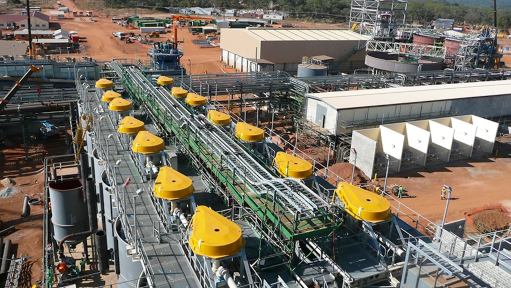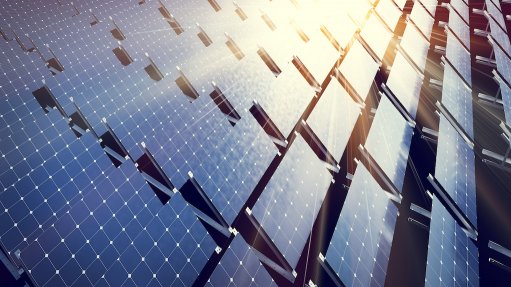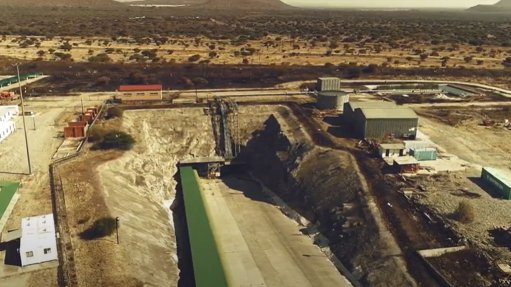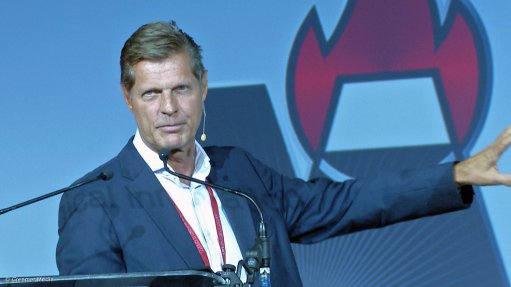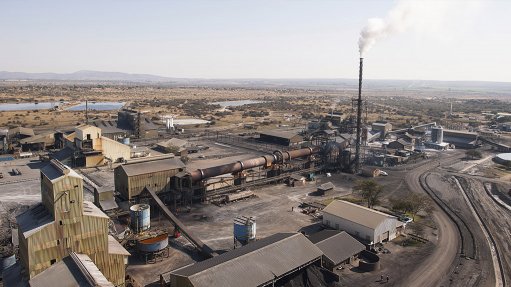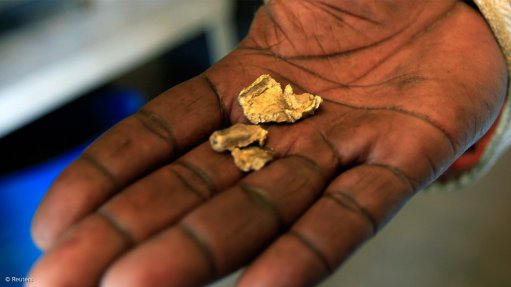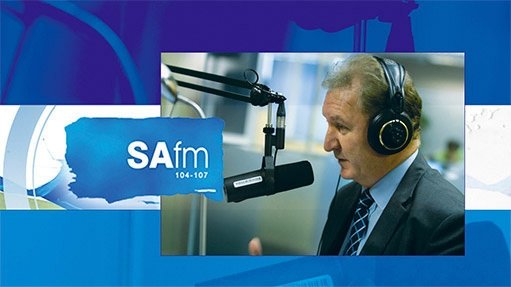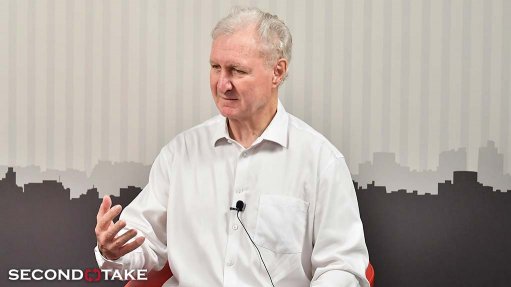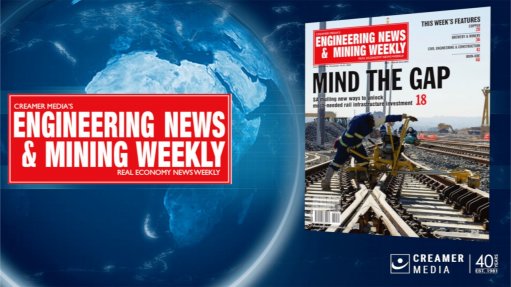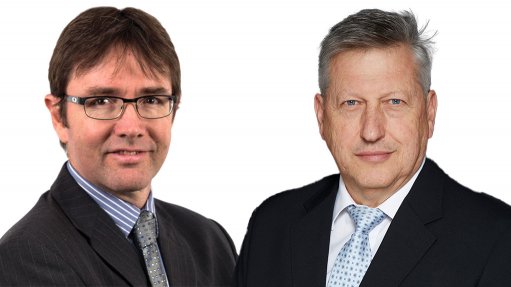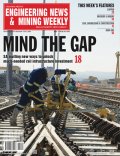Establishment of carbon borders not supported by climate finance commitments

This webinar discusses Carbon Border Adjustment Mechanisms and its impact on Africa and is hosted on behalf of ESG Africa Conference & Expo. The discussion is moderated by Wendy Poulton and panelists include Mahendra Shunmoogam, Dr Tsotetsi Makong, Professor David Luke and Kayla Jackson.
The European Union (EU) is one of the first regions to establish a Carbon Border Adjustment Mechanism (CBAM) scheme, with the current requirement that companies report on the total carbon footprint of products imported into the EU.
The six products currently being subjected to the CBAMs requirements are iron, steel, fertiliser, aluminium, cement and electricity and many developing countries, including South Africa, view CBAMs as a nontariff barrier to trade, speakers noted during a webinar hosted by Creamer Media on July 10.
“Historically, developing countries have not created the mess we’re in, but now we are faced with the consequences of the industrialisation of the global North. However, we are committed to climate change action and developing countries have created concrete decarbonisation strategies and pathways.
“Under the UN Framework Convention on Climate Change (UNFCCC) and the Paris Agreement, there is specific recognition for common but differentiated responsibility and respective capabilities within national circumstances,” said Department of Trade, Industry and Competition international trade policy and trade policy negotiations directorate director Mahendra Shunmoogam.
The CBAM also goes against the principles of the convention and the Paris Agreement, which state that developing countries should be enabled to decarbonise with technology, financial and capacity-building capabilities, he added.
“The UNFCCC climate responses working group will again discuss climate change response measures that are not enabling developing countries to decarbonise, and instead are preventing them from decarbonising,” he noted.
Further, the $100-billion a year promised by developed countries to developing countries to enable them to decarbonise was only met in 2022, according to the Organisation for Economic Cooperation and Development.
“Financial mechanisms enable decarbonisation and these must take the form, not of loans with significant interest, but concessional loans that enable developing countries to invest into sectors that will bring about their decarbonisation strategies.
“This is what is needed; not punitive measures that are actually nontariff barriers to trade,” said Shunmoogam.
Further, if CBAMs fall under World Trade Organisation (WTO) rules exceptions, then such mechanisms would be considered discriminatory in terms of the rules, because European Free Trade Association nations are exempted from the EU CBAM, noted trade bloc African Continental Free Trade Agreement (AfCFTA) Secretariat technical assistance, capacity building, trade policy and trade negotiations chief technical adviser Dr Tsotetsi Makong.
However, owing to the lack of an appellate body in the WTO, measures that otherwise would have been rendered inconsistent are not, he added.
The continent is trading widely with the EU, including in the majority of the current products under the mechanism, which means that African countries cannot help but see this mechanism as facilitating trade diversion.
“This can trigger divestment because companies will need to comply with the CBAM and may be unable to do so. The little foreign direct investment that we have may fly away, and the technology transfers associated with such investments may also be lost, meaning the CBAM has broad implications for the continent,” he said.
Further, the average cost of capital for renewable solar, wind and hydropower energy for African countries was 8.2%, while it was 4.4% for developed countries, said research organisation Firoz Lalji Institute for Africa strategic director Professor David Luke.
“Between 2015 and 2021, the amount of capital for renewable energy in Africa declined by 55%. In terms of nationally determined contributions (NDCs), there is a significant amount of work to be done. For example, only 60% of Kenya’s NDCs between 2020 and 2030 are funded and a gap remains. This seems to be the pattern across other African countries as well.
“Adaptation is a big challenge for African countries, but this is an area where the issue of capital is clearly not getting to the targets,” he said.
Additionally, the scope of products subject to EU CBAM regulations is expected to expand.
“In moral terms, no one will save Africa or other developing economies. We have to save ourselves. There is no way that a country or bloc, like the EU, will willingly provide an opportunity for a third-party country to create unemployment in their region,” said Makong.
While African countries must assess trade with the global North as prime markets to earn foreign exchange currency, the continent cannot merely wait for the scope of products subjected to the CBAM to become more expansive, and even basic commodities may be affected.
“If other jurisdictions are more favourable in terms of costs, investors will simply go to these places. This will lead to trade diversion. Our assessment of trade under the AfCFTA highlighted some products that have been excluded from this agreement, and some of them are being imported from other jurisdictions, including the EU.
“There is calibration to be done in terms of trade rules, but the AfCFTA provides opportunities for the private sector in Africa to diversify markets. Let us not wait until more products are added to the CBAM and we are left high and dry,” he advised.
Meanwhile, the EU was an important market for African countries, with the EU accounting for 26% of Africa’s exports of fertiliser, 16% of its iron and steel, 12% of its aluminium exports and 12% of its cement, said Luke.
“While there are differences between countries, these are significant trade flows and, in our modelling, we found that the CBAM would cause a fall of exports to the EU from Africa of up to 13.9% of iron and steel, 88.2% of fertiliser and 3.9% of cement exports,” he said.
This would have a 0.91% impact on GDP, which equates to about $25-billion in terms of its impact on Africa’s collective GDP.
“To put this figure into perspective, $25- billion is more than three times the €6.3- billion development cooperation commitment made by the EU in 2021.”
The characteristics of global trade flows meant that there was a nexus between trade and climate actions, Shunmoogam noted.
“Therefore, we are arguing that the CBAM is not a climate measure, but a punitive trade measure because, if you were to support climate actions through this mechanism, you would consider the risks and ramifications.”
He noted that new European Commission trade director-general Sabine Weyand has stated that the EU needed to do a risk assessment of its policies before it started implementing them, which had not been done for the CBAM regulations.
However, companies could help to close the existing climate action finance gap because resource-rich economies were transitioning from high-carbon economies to mineral-rich economies, said financial advisory and audit services company Moore Johannesburg senior manager Kayla Jackson.
Comments
Press Office
Announcements
What's On
Subscribe to improve your user experience...
Option 1 (equivalent of R125 a month):
Receive a weekly copy of Creamer Media's Engineering News & Mining Weekly magazine
(print copy for those in South Africa and e-magazine for those outside of South Africa)
Receive daily email newsletters
Access to full search results
Access archive of magazine back copies
Access to Projects in Progress
Access to ONE Research Report of your choice in PDF format
Option 2 (equivalent of R375 a month):
All benefits from Option 1
PLUS
Access to Creamer Media's Research Channel Africa for ALL Research Reports, in PDF format, on various industrial and mining sectors
including Electricity; Water; Energy Transition; Hydrogen; Roads, Rail and Ports; Coal; Gold; Platinum; Battery Metals; etc.
Already a subscriber?
Forgotten your password?
Receive weekly copy of Creamer Media's Engineering News & Mining Weekly magazine (print copy for those in South Africa and e-magazine for those outside of South Africa)
➕
Recieve daily email newsletters
➕
Access to full search results
➕
Access archive of magazine back copies
➕
Access to Projects in Progress
➕
Access to ONE Research Report of your choice in PDF format
RESEARCH CHANNEL AFRICA
R4500 (equivalent of R375 a month)
SUBSCRIBEAll benefits from Option 1
➕
Access to Creamer Media's Research Channel Africa for ALL Research Reports on various industrial and mining sectors, in PDF format, including on:
Electricity
➕
Water
➕
Energy Transition
➕
Hydrogen
➕
Roads, Rail and Ports
➕
Coal
➕
Gold
➕
Platinum
➕
Battery Metals
➕
etc.
Receive all benefits from Option 1 or Option 2 delivered to numerous people at your company
➕
Multiple User names and Passwords for simultaneous log-ins
➕
Intranet integration access to all in your organisation







